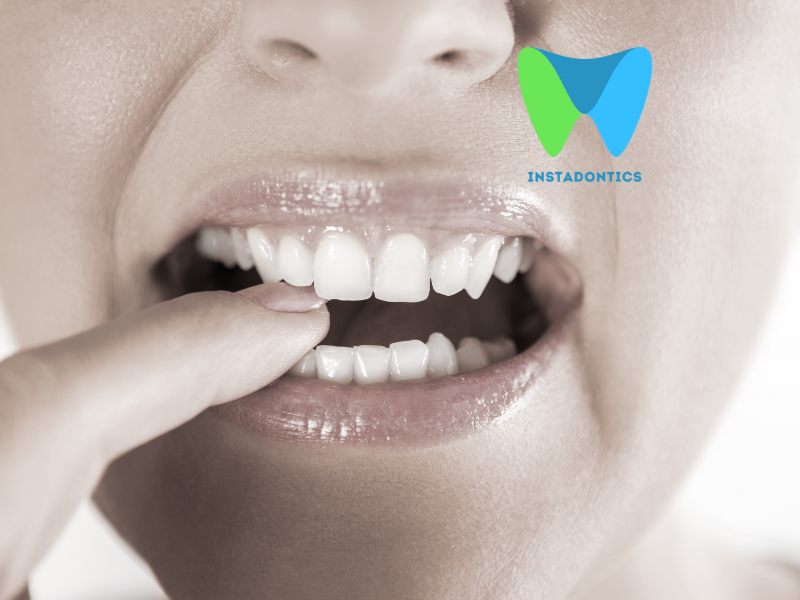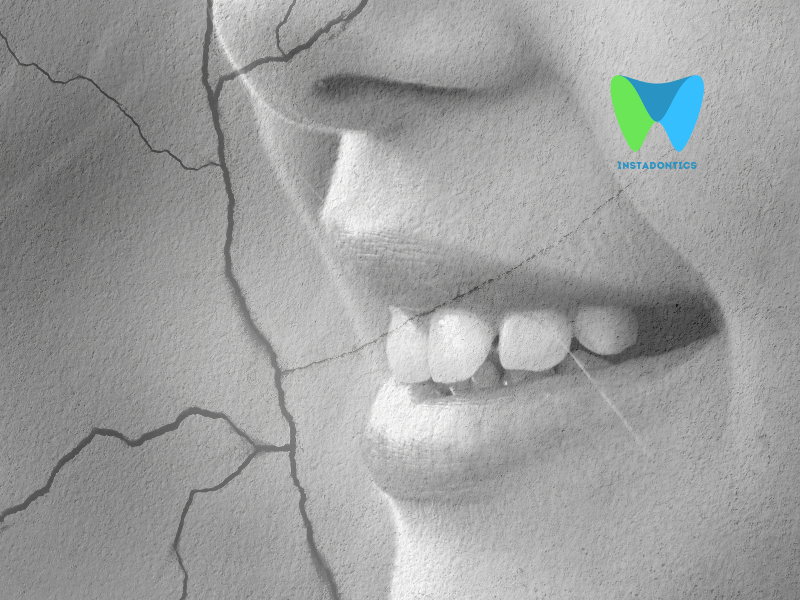Tooth extraction is one of the most common dental procedures, whether it’s necessary due to severe decay, overcrowding, or impacted teeth. Despite its routine nature, the recovery process following a tooth extraction can be uncomfortable and, at times, painful. The pain and swelling that follow are normal, but managing them effectively is crucial for a smooth recovery. This blog will provide you with valuable insights on how to ease pain after a tooth extraction with scientifically backed methods, home remedies, and expert advice.
How to Ease Pain After a Tooth Extraction
1. Understanding Post-Extraction Pain and Swelling
Before diving into pain-relieving strategies, it’s important to understand the typical symptoms following a tooth extraction. After the procedure, you may experience discomfort, swelling, and slight bleeding, which are all part of the natural healing process. However, excessive pain or swelling can be signs of complications such as infection or dry socket, which will require professional attention.
To prevent and manage pain effectively, it’s essential to focus on the following aspects of the healing process:
- Pain: This is often a result of the trauma to the tooth and surrounding tissue during extraction.
- Swelling: The body’s inflammatory response to injury can cause swelling in the extraction area.
- Bleeding: While a certain amount of bleeding is normal after the procedure, excessive bleeding is a concern.
Fortunately, there are several ways to manage these symptoms and accelerate healing, making the process more comfortable.
2. Follow Your Dentist’s Aftercare Instructions
The first and most important step in ensuring a smooth recovery to ease pain after a Tooth Extraction is adhering to the post-operative care instructions provided by your dentist. Following your dentist’s guidance minimizes the risk of complications like infection, dry socket, or severe swelling. These instructions often include:
- How to care for the extraction site: You may be advised not to rinse, brush, or touch the area for the first 24-48 hours to prevent disrupting the blood clot that forms in the socket.
- How to manage bleeding: A clean gauze pad will likely be placed over the extraction site to control bleeding. You will need to change it regularly and avoid sucking or spitting, which can dislodge the clot.
- When to schedule follow-up appointments: Depending on the complexity of the extraction, you may need a follow-up appointment to ensure proper healing.
Your dentist will also inform you about the expected duration of discomfort and what to do if symptoms worsen.
3. Apply Cold Compresses to Reduce Swelling
Swelling after a tooth extraction is common and can contribute to significant discomfort. The application of cold compresses is one of the most effective ways to control swelling and minimize pain during the initial recovery phase.
How to apply a cold compress:
- Use an ice pack or wrap ice cubes in a clean cloth.
- Apply it gently to the cheek near the extraction site.
- Keep the compress on for 15-20 minutes at a time, followed by a 20-minute break.
According to research published in The Journal of Clinical Dentistry, ice applications during the first 24 hours after an extraction significantly reduce swelling and pain. This is because cold causes blood vessels to constrict, thereby reducing inflammation and numbing the area for temporary pain relief.
4. Take Over-the-Counter Pain Relievers
Pain management after a tooth extraction can be effectively achieved using over-the-counter (OTC) pain relievers. Ibuprofen (Advil, Motrin) and acetaminophen (Tylenol) are commonly recommended to reduce pain and inflammation. Both drugs are considered safe for managing mild to moderate pain after dental procedures when used as directed.
How to use pain relievers:
- Follow the instructions on the packaging regarding dosage and timing.
- If your dentist has prescribed a specific pain reliever, adhere to their instructions for dosage.
- For combined relief, some people take ibuprofen with acetaminophen. However, always consult your dentist before using both to avoid exceeding the recommended dosage.
Over-the-counter pain medications can help reduce inflammation and improve your comfort, and reduce pain after a Tooth Extraction. If your pain persists or becomes severe, you may need prescription-strength pain relief. Always follow your healthcare provider’s advice regarding pain management.
5. Rest and Elevate Your Head
Getting enough rest is essential for a quick recovery after any surgical procedure, including tooth extractions. Rest allows your body to focus on healing and can help reduce discomfort.
After a tooth extraction, it is crucial to keep your head elevated, particularly during sleep. Elevating your head will help reduce swelling and promote blood circulation away from the extraction site. Lying flat can cause blood to pool in the area, leading to increased swelling and pain.
How to rest effectively:
- Sleep with your head propped up on pillows or use an adjustable bed if available.
- Avoid physical exertion, as it can increase blood pressure and potentially worsen swelling and discomfort.
The first 48 hours after the extraction are critical, so try to limit any activity that could strain your body or affect the healing process.
6. Use Warm Saltwater Rinses
A warm saltwater rinse can soothe the extraction site, reduce inflammation, and cleanse the area of food particles or bacteria. Saltwater has natural antibacterial properties, making it an ideal rinse for healing.
How to make a saltwater rinse:
- Mix half a teaspoon of salt into a cup of warm water.
- Gently swish the solution around your mouth for about 30 seconds.
- Spit it out and repeat as necessary, especially after meals.
According to the American Dental Association, saltwater rinses help to reduce the risk of infection and can relieve discomfort without irritating the extraction site. Avoid using mouthwashes with alcohol during the first few days, as they can delay healing.
7. Avoid Smoking and Alcohol
Smoking and alcohol can significantly hinder the healing process after a tooth extraction. Smoking impairs blood circulation and oxygen flow to the healing tissues, making it more difficult for the extraction site to heal. Research in The Journal of Oral and Maxillofacial Surgery shows that smoking increases the risk of complications such as dry socket and infection.
Similarly, alcohol can increase bleeding and interfere with the formation of a blood clot, which is crucial for healing. It can also interact negatively with any prescribed medications, causing additional side effects.
To promote healing, it’s essential to:
- Refrain from smoking for at least 72 hours after the extraction.
- Avoid drinking alcohol for the first 48-72 hours.
By giving your body the best chance to heal, you can minimize the risk of complications and ease your pain faster.
8. Eat Soft Foods and Stay Hydrated
Eating soft, bland foods will reduce irritation to the extraction site and prevent additional pain. You should avoid hot, spicy, or crunchy foods that may cause discomfort or dislodge the blood clot.
Soft food options:
- Mashed potatoes
- Yogurt
- Scrambled eggs
- Soup (without hot liquids)
- Smoothies
Staying hydrated is equally important. Drinking plenty of water supports your body’s healing process and helps prevent dehydration, which can worsen your recovery.
Avoid these foods:
- Hard or crunchy foods
- Hot or spicy foods
- Sugary foods that can promote bacterial growth
By sticking to soft foods and staying hydrated, you will minimize the likelihood of further pain or discomfort during the recovery period.
9. Prescription Medications for Severe Pain
If the pain persists or becomes more intense, your dentist may prescribe stronger pain medications. These may include opioids like hydrocodone or oxycodone, which are effective for managing severe pain.
However, opioids should only be used under strict medical supervision and for a short period of time. Overuse of these medications can lead to dependence or other side effects. Always follow the prescribed dosage instructions carefully.
If you’re unsure whether you need prescription painkillers, contact your dentist for guidance. They can provide alternatives or help you manage pain more effectively.
10. Consider Herbal Remedies
Certain herbal remedies can be beneficial in managing pain and promoting healing after a tooth extraction. Herbal remedies like clove oil and chamomile have analgesic and anti-inflammatory properties that can help ease discomfort and reduce swelling.
How to use herbal remedies:
- Clove oil: Apply a small amount of clove oil to a cotton ball and gently dab it on the affected area. Clove oil contains eugenol, a natural anesthetic that can temporarily numb the pain.
- Chamomile tea: Drinking chamomile tea or using it as a mouth rinse can help soothe the extraction site and reduce inflammation.
Herbal remedies should complement other pain management techniques but not replace medical treatment or professional advice.
11. Monitor for Complications
While most tooth extractions heal without issues, complications can arise. The two most common complications are dry socket and infection. Dry socket occurs when the blood clot at the extraction site dislodges, exposing the bone and nerve, which can lead to severe pain.
Signs of dry socket include:
- Severe pain that starts 2-4 days after extraction.
- A foul taste or odor in the mouth.
- A visible empty socket where the clot should be.
If you experience any of these symptoms, contact your dentist immediately.
Signs of infection include:
- Redness, warmth, or pus around the extraction site.
- Fever or chills.
- Persistent pain despite painkillers.
Prompt attention from your dentist can prevent these complications from becoming more serious.
12. Avoid Excessive Physical Activity
While it may be tempting to return to your normal routine as quickly as possible, excessive physical activity can delay your recovery and increase pain. Exercise raises blood pressure, which can lead to more swelling and discomfort in the days following the extraction. It’s best to avoid strenuous exercise for at least 3-5 days.
The recovery period after a tooth extraction can be uncomfortable, but following these strategies will help alleviate pain and promote faster healing. Be sure to follow your dentist’s aftercare instructions, use ice packs to reduce swelling, take over-the-counter pain relievers as necessary, and rest during the first few days after the extraction. Additionally, sticking to a soft-food diet, staying hydrated, and avoiding smoking and alcohol will also aid in a speedy recovery. If you encounter any unusual symptoms, don’t hesitate to reach out to your dentist for further guidance.
By taking these steps, you’ll ease your pain and speed up your healing process, ensuring that you can return to your regular routine with minimal discomfort.



